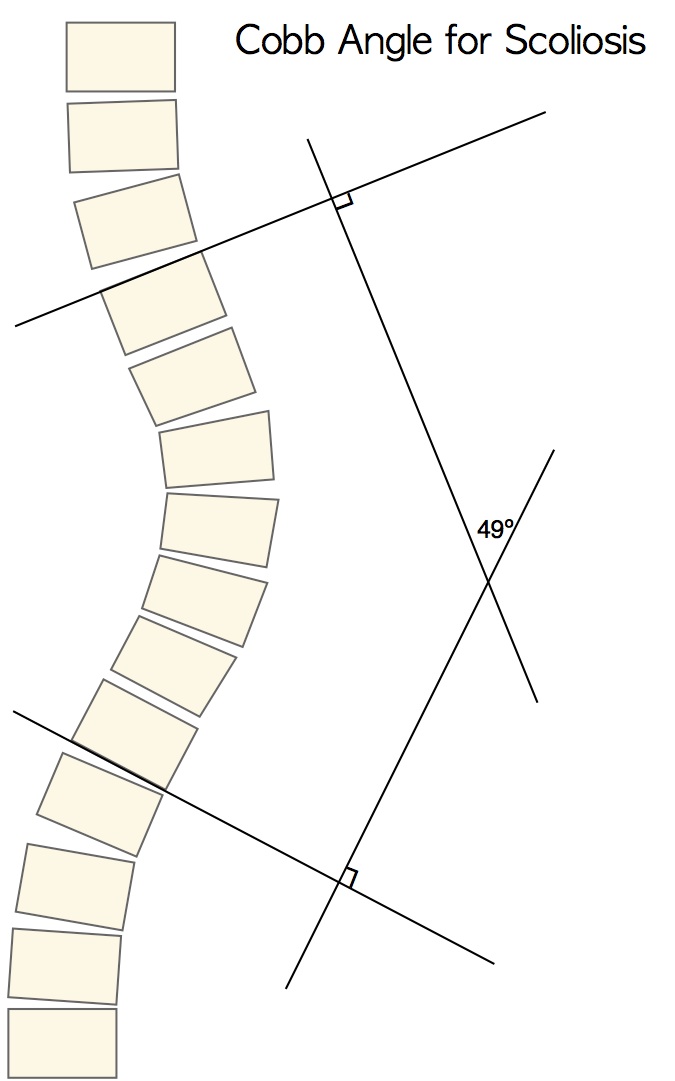Cobb Angle Measurement
 The most popular method of assessment of scoliosis is the degree of Cobb angle measurement on x-ray. Any result under 10º is not considered a scoliosis.
The most popular method of assessment of scoliosis is the degree of Cobb angle measurement on x-ray. Any result under 10º is not considered a scoliosis.
To determine Cobb angle: a line is drawn at the superior endplate (top edge) of the most tilted upper vertebra, and at the inferior endplate (bottom edge) of the most tilted lower vertebra.
Next, lines are drawn perpendicular to each of the two lines drawn at the most tilted vertebrae. The angle measurement where they intersect is the Cobb angle, or Cobb’s angle, as some refer to it.
“In a normal spine this procedure will yield two parallel lines, with an angle of ‘0′ (1). In scoliosis, the vertebrae are tilted according to the severity of the curvature. For any given curvature, the vertebrae at the top and bottom of the curve are the most tilted and are used as a basis for the Cobb angle measurement”(2).
Cobb angle is the universal standard to diagnose scoliosis and to assess whether a curvature has stabilized or is getting worse (3).
Be aware, the Cobb angle is an imperfect measurement. The most tilted vertebra at top and bottom is a subjective choice of the practitioner measuring. As a result, the accepted margin of error to declare a curve better or worse is a Cobb angle change of 5º, one study argues 10º.
Scoliosis: Mild, Moderate or Severe
“Scoliosis is generally classified as mild (10-24º), moderate (25-50º) and severe >50º with some quantitative variation among sources, depending on the perspective of the author of any given article”(4).
1,2,4 Hawes, Martha C., Ph.D., Scoliosis and the Human Spine: A critical review of clinical approaches to the treatment of Spinal deformity in the United States, and a proposal for change, Tuscon, Arizona: West Press, 2003.
3 Moe’s Textbook of Scoliosis and Other Spinal Deformities, Third Edition, Lonstein J, Bradford D, Winter R, Ogilvie J, WB Saunders, Philadelphia.
Information contained on this site is for informational purposes only. It is not meant for diagnosis. You must consult a physician for a medical opinion.

